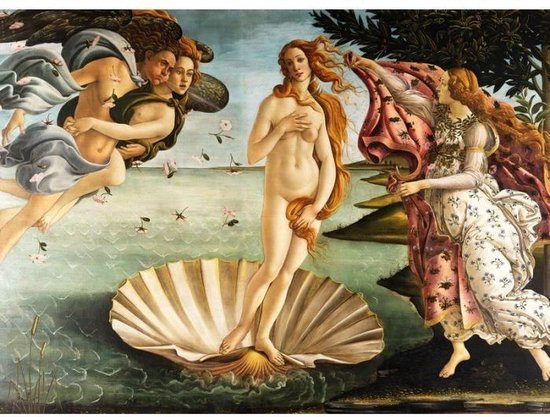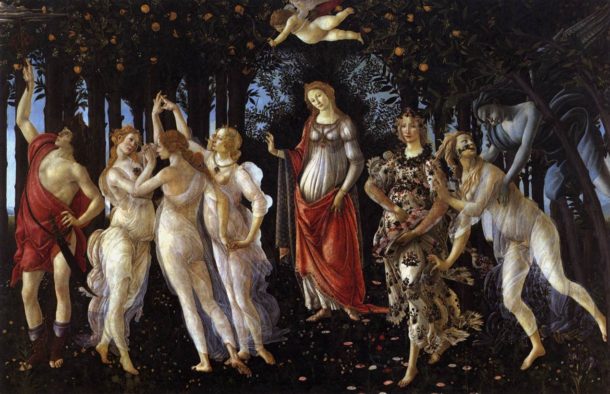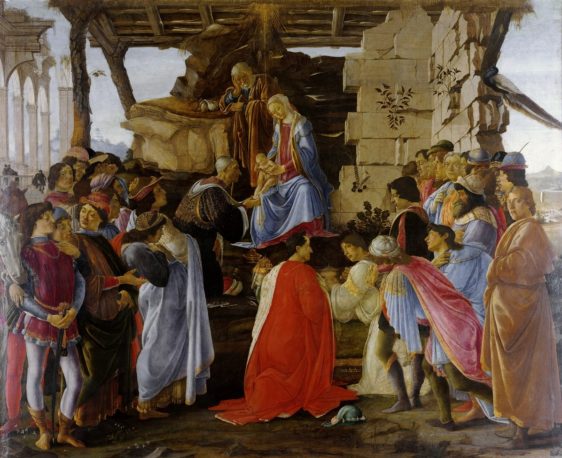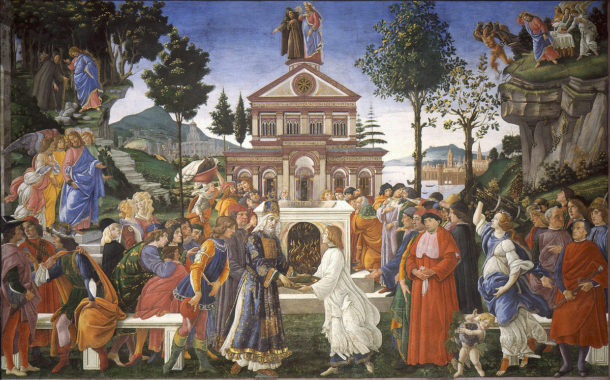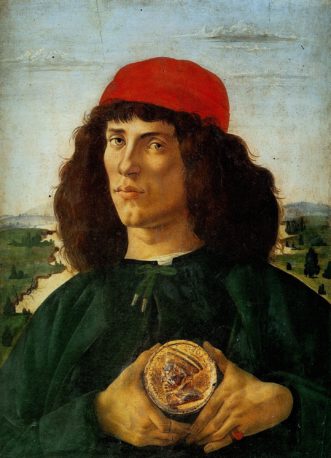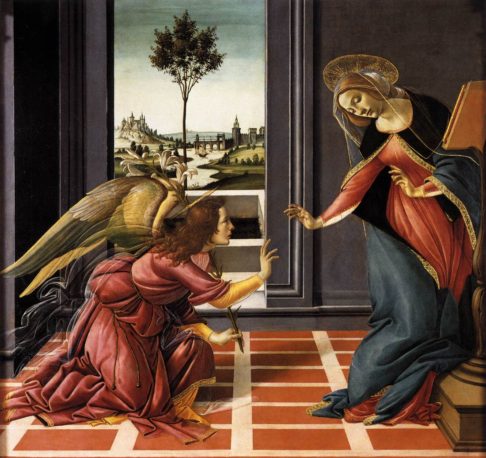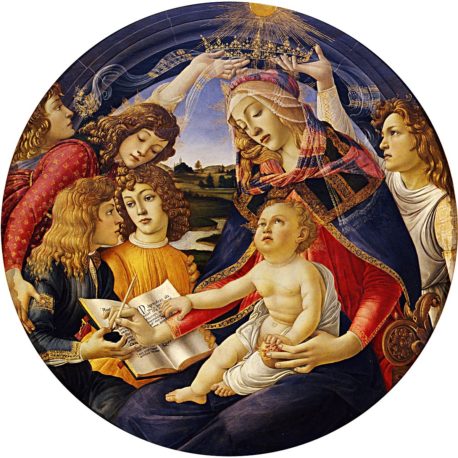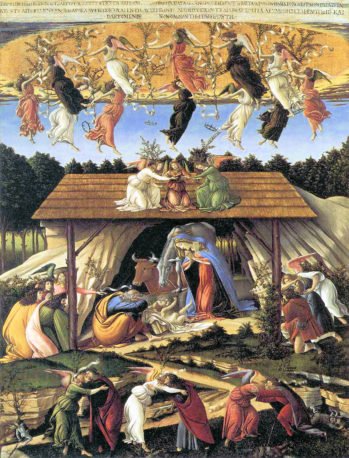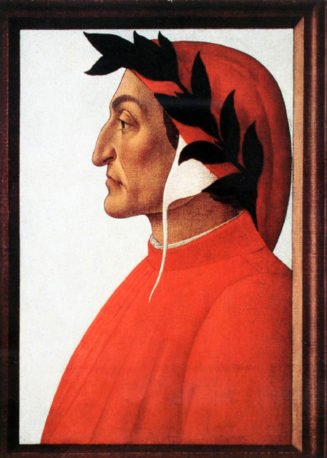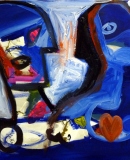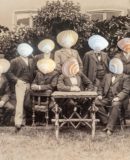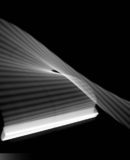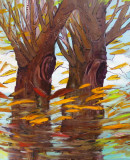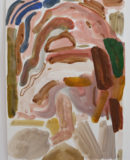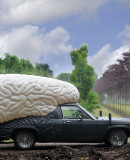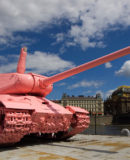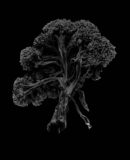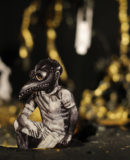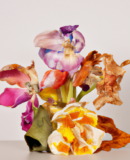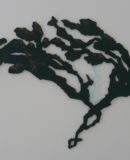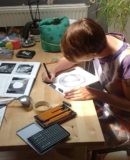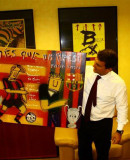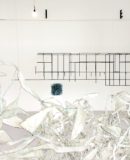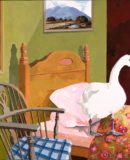World Fine Art Professionals and their Key-Pieces, 437 - Sandro Botticelli
World Fine Art Professionals and their Key-Pieces, 437 – Sandro Botticelli
More than 20 years ago, just after the year 2000, I cycled from the Netherlands to Italy with Martien van Lankvelt. We had touring bikes, with two luggage bags on the rear luggage rack and another two small ones below the front wheel. We drove through Belgium, France, Germany. Our legs became stronger and stronger, so much so that we also dared to climb the Alps.
At the top of the last pass we saw Italy before us. That beautiful country with that equally beautiful language and those beautiful art treasures. We went down: to Bolzano, Trento, Verona, Bologna, to end in Florence. And there, in the latter city, we saw the masterpieces of Italian painters from the late Middle Ages, the early Renaissance and the Baroque, including those of Sandro Botticelli, in the Uffizi Gallery.
The Birth of Venus
They were familiar to me, The Birth of Venus and La Primavera, but still it was a unique experience to see them in real life. Venus in the shell at sea, with her flowing red hair, blown by the west wind – in the shape of two angels – which drives the shell to the shore where a seasonal goddess with a cloak is ready to wrap it around Venus.
In the other painting – La Primavera – Venus again plays the leading role, now with the Three Graces, who represent the virtues of Chastity, Beauty and Love, with above them a blindfolded Cupid who has drawn his bow with an arrow towards these lovely ladies and in the middle the flower goddess Flora. And then there are also the earth nymph Kloris and Zephyros, the west wind, who also figured in the birth of Venus. The oranges from the previous season are still hanging on the trees.
Restless boy
Sandro Botticelli (1445 – 1510) was actually called Alessandro Filipepi, full name Alessandro di Mariano di Vanni Filipepi. His brother Antonio was a bit fat, and was therefore called Botticello (barrel). A few friends then jokingly called Sandro Botticelli and under that name he became known as an artist. Giorgio Vasari wrote much interesting about him in his book Le vite de’ più eccellenti pittori, scultori, e architettori (‘From the lives of the artists’), (1550).
Sandro was a restless boy. Father Felipepi didn’t know what to do with him. He managed to place the boy as an apprentice with a goldsmith, but that was not such a success. He then tried it with a painter, Fra Filippo Lippi, and that turned out to be a good move. Fra Filippo was an excellent painter and he seemed to get along well with the young Sandro. He was allowed to paint. Sandro imitated his master very well, Fra Filippo was amazed by it. He was also allowed to make his own work, in which Fra Filippo’s style was clearly recognizable. He was loaned to the studios of other leading Renaissance painters such as Antonio Pollaiuolo and Andrea del Verrochio. He quickly reached a level that few could match.
The Medici family
Fra Filippo recommended him to the influential Medici family, who indeed started giving him assignments. By the mid-15th century, the Medici family had seized the financial and political power of the Republic of Florence. Lorenzo I, nicknamed il Magnifico was one of the most famous members of the family. He ruled Florence during the height of the Italian Renaissance.
During the second half of the 15th century, Botticelli painted portraits of the Florentine elite, as well as religious and mythological scenes. One of the best-known portraits is the Young Man with a Medal, a portrait of Cosimo de Medici. It is inspired by the work of the Flemish painter Hans Memling.
From 1470 he worked from his own workshop. The Medici family played a role in one of his earliest masterpieces, Adoration of the Magi (1475–76). This work was made for the altar of the church of Santa Maria Novella. The painting shows a frontal view of the religious scene and includes portraits of the three wise men, whose faces are based on the faces of Medici relatives. On the far right is Sandro himself, in an orange cloak. After the Pazzi Conspiracy in 1478, which resulted in the murder of Giuliano de’ Medici, Botticelli was commissioned to paint a memorial portrait of the deceased above the Porta della Dogana in Florence.
Sistine Chapel
In 1480 he was at the height of his career. The following year, 1481, he was commissioned, alongside the artists Domenico Ghirlandaio, Cosimo Rosselli, Pietro Perugino and several others, to paint in the Sistine Chapel. The order came – via Lorenzo de Medici – from Pope Sixtus IV. Botticelli’s painting, Prove di Cristo, the Temptation of Christ, opposite the papal throne, depicts the various triumphs of Christ over a disguised Satan, as described in the Gospel of Matthew.
The Medicis expelled
The political climate changed. At the end of the 15th century, in 1494, the power of the Medici’s was over and they were expelled from Florence. Botticelli became a follower of the monk and religious reformer Girolamo Savonarola. He changed his style, dropped the excess and focused on devotional subjects. In La Natività mistica, the Mystical Nativity Scene (1501) he combines the story of the birth of Christ and the end of the world in one painting.
Botticelli died in 1510, the Medicis were still in exile. Interest in his work waned. That only changed in the 19th century, when his fame began to grow slowly but surely, which is now greater than it had ever been.
Images
1) The Birth of Venus, 2) La Primavera (Spring), 3) The Adoration of the Magi, 4) The Trial of Christ, 5) Portrait of a Young Man with a Medal of Cosimo the Elder, 6) The Heavenly Annunciation , 7) Madonna of the Magnificat, 8) the Mystical Nativity, 9) portrait of Dante, 10) Sandro Botticelli (self-portrait)
Disclaimer: The views, opinions and positions expressed within this guest article are those of the author Walter van Teeffelen alone and do not represent those of the Marbella Marbella website. The accuracy, completeness and validity of any statements made within this article are not guaranteed. We accept no liability for any errors, omissions or representations. The copyright of this content belongs to Walter van Teeffelen and any liability with regards to infringement of intellectual property rights remains with the author.

